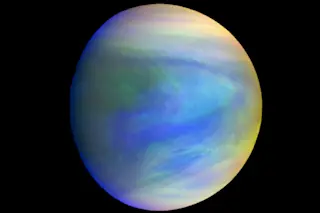For over 50 years, humans have tried to pull back the thick clouds of Venus to study its surface. Most observations have tapped the long wavelengths of radar to pierce the cloud layers. Now, scientists have combined long-term radar observations of the planet’s surface to try to clarify a longstanding mystery behind the length of Venus' day. On Earth, it's easy to measure how long a day lasts. You simply pick a feature and track how long it takes for the Sun to return to the same position. Venus isn’t so simple. On Venus, a day lasts about 243 Earth-days. That's longer than it takes the planet to complete an orbit around the Sun. So, a Venusian year actually spans just 225 Earth-days. The clouds make things even more challenging. They cover the surface and make it difficult to locate features. Still, thanks to radar and spacecraft like NASA's Magellan ...
How Long is a Day on Venus? The Answer Keeps Changing
Researchers have spent decades trying to pin down exactly how long a day on Venus lasts. Finding the answer cuts to the core of fundamental mysteries about the planet.

Newsletter
Sign up for our email newsletter for the latest science news
More on Discover
Stay Curious
SubscribeTo The Magazine
Save up to 40% off the cover price when you subscribe to Discover magazine.
Subscribe












